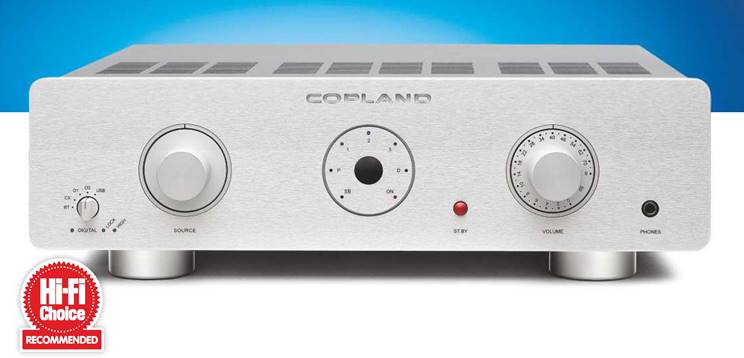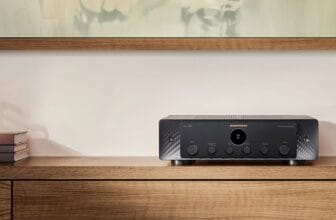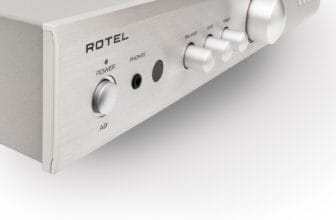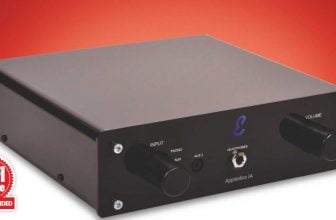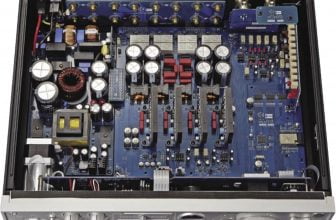Copland CSA70 Review: Go your own way
Copland’s most affordable integrated takes a different design route to its stablemates, but Ed Selley thinks the result is still a classic
Some companies are intractably wedded to a single design philosophy and will employ it across everything they make. Others adopt a more flexible approach, tweaking the basics to best suit the role in question. Few companies are quite as adaptable as Copland, though. Its current range comprises both hybrid and all-valve designs, but for its latest amplifier it has gone exclusively solid state. This isn’t the first time it has done this, but it’s still unusual to have three different types of amp in the same range.
ORIGIN Denmark
TYPE Integrated amplifier
WEIGHT 13kg
DIMENSIONS (WxHxD) 435 x 135 x 370mm
FEATURES
• Quoted output power: 2x 70 W (8ohm)
• Inputs: 3x stereo RCA; MM phono stage
• Digital board: 1x optical; 1x coaxial; 1x USB-B
DISTRIBUTOR Absolute Sounds
TELEPHONE 0208 9713909
WEBSITE copland.dk absolutesounds.com
The CSA70 is Copland’s entry-level offering and follows a similar design to the CSA100 (HFC 465) and 150 (HFC 479), but dispenses with the valve preamp stage. Copland says the focus is short signal paths and avoiding unnecessary complexity. To this end, the amplifier is laid out on a single board to shrink the circuit, reducing signal path length and helping to increase the resistance of the board to external interference.
As the name suggests, the amp section is good for 70W into 8ohm and, while no figure is quoted for a 4ohm load, Copland says it is stable down to 2ohm. The company’s longstanding policy of a smaller number of high-quality components extends to the preamp too, which uses a conventional pot rather than a rotary encoder.
Three line inputs via RCA connections are supported alongside a movingmagnet phono stage that is paired with both a line-level and a pre out. A single set of speaker terminals is fitted and around the front there’s a 6.35mm headphone socket. This is then augmented by a digital board that has two optical inputs, one coaxial and one USB, allowing the CSA70 to function as a largely self-contained device. For an extra £, apt X Bluetooth can be fitted too.
The CSA70 uses the same ‘Amenero’ USB interface as the CSA100 and 150, but where they have an ESS DAC here it’s a Wolfson WM8740. This is a fairly venerable bit of kit, which is partly reflected in the sample rate support of ‘only’ 24-bit/192kHz PCM with no DSD. Copland owner and designer Ole Moller has used the Wolfson before in the CDA825 CD player and rates it highly. The board has its own regulated PSU arrangement in the pursuit of extracting the most performance from it.
It’s not a ballistic amp, but it never fails to deliver material in a head-nodding way
The separated nature of the board does manifest itself in the form of my main gripe with controlling the CSA70. The three RCA inputs and phono stage are selected either via the large input selector on the front or the remote. Selecting the ‘digital’ input only selects the point where the digital board meets the main preamp. Selection of the digital inputs is via a small switch with no remote control, which is irksome if you’re using more than one input regularly.
The rest of the design and aesthetics are worthy of praise. The standard Copland calling cards of a clean and logical layout complemented by lovely details like the machined logo in the front panel and those glorious knobs makes for an attractive amplifier. I think it looks best in silver, but the black review sample is handsome and well made. This isn’t a collection of exotic materials and radical production processes, but what results is something that feels confidence-inspiring in use. Pretty much the only thing I can find fault with is the slightly crude grounding post for the phono stage, which rotates rather than unscrews to allow the ground lead to be attached.
Sound quality
With the CSA70 connected to Focal’s Kanta No1 standmount (HFC 454) and taking a USB feed from a Roon Nucleus (HFC 439), how it performs is very much in keeping with other Copland amps despite the change in topology. This is not about shock and awe; 10 minutes in and you’ll be thinking the CSA70 is pretty good. Give it an hour and you’ll realise that nothing you’ve chosen in that hour has in any way unsettled it and after three hours or thereabouts, you’ll realise you are in the company of a truly great all-rounder.
The key word in all this is ‘balance’. The Kanta No1 is a different beast from some older Focal designs, but it shows an edge when provoked. The Copland manages to ensure that this never sounds dull or smoothed off. This neatly trodden path between energy and civility is something that complements a wide selection of material. With the glorious Calm Down by WH Lung, it ensures that the underlying synth line is propulsive and groovy while the soaring vocals that top the track fizzle with life and energy without ever going too far.
What is interesting about this is that the digital board is very much part of achieving this overall presentation. Connecting a Chord Electronics Hugo 2 (HFC 435) and 2Go (HFC 465), the CSA70 faithfully relays what this duo can do but the

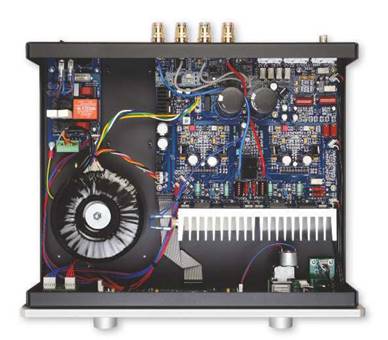
result is leaner and less effortlessly rich than from the internal board. It’s not so much a question of whether the internal board is ‘better’ so much as more adapted to the job at hand. The way it handles rhythm is particularly notable. This is not an out-and-out ballistic amp, but it never fails to deliver the material being played in a head-nodding way.
The good news is that the functionality that isn’t dependent on digital is also superbly accomplished. The phono stage in particular is a gem. All the basics are covered with no noise at idle and plenty of gain, but it’s the effortless richness and body it has that really stands out. Hayden Thorpe’s beautiful Golden Ratio is delivered with unforced, effortless musicality. Thorpe sounds gloriously real; possessed of the weight and scale required to convince and his relationship with the supporting instrumentation feels utterly self explanatory. It might ‘only’ be a moving-magnet design, but you’ll need a fairly capable external phono stage to meaningfully better what the one in the CSA70 can do. The headphone socket also puts in a fine showing. There are some rivals at the price that might be able to fractionally better the outright performance, but it is more than good enough for regular late-night use and puts in a fine performance with Focal’s Clear MG. It’s fractionally noisier than the very best standalone devices but, again, there’s no shortage of gain and its performance across the digital and analogue sides of the amplifier is admirably consistent.
Conclusion
The upshot is an amplifier that does an awful lot and manages to do all of it well. With any amplifier that has functionality like digital inputs, the value proposition is dependent on what equipment you already have and how much you perceive that functionality has been fitted for convenience. Here, everything that the CSA70 does strengthens its claim to be a fine all-rounder. It might use a different topology to other members of the Copland family, but the same effortless, unforced brilliance that they demonstrate is present here too. This is a superb new arrival at the price and one that should be on everyone’s shortlist •
OUR VERDICT
HOW IT COMPARES
Rega’s identically priced Aethos (HFC 457) is effortlessly powerful and has one of the best internal headphone amplifiers in the business. It’s also a more forceful and dynamic performer too. The Copland has a more flexible spec – including the fabulous phono stage and capable digital board – together with enough power for most needs. What it loses to the Rega in heft and impact, it trades in sweetness and refinement. The Rega is arguably the better dedicated amplifier, but the Copland remains a superior all-rounder.
